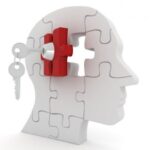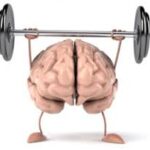Some of the most effective Mental Edge training can be done on the court during regular practice. Incorporating Mental Edge skills into on-court preparation will enhance the quality of the training and reinforce the value of the Mental Edge training to the players.
On-Court Tennis Imagery
Tennis imagery can be useful at three phases of drilling. First, typically after you have given feedback following a drill, players will say they understand. How well the instruction sinks in questionable. In order to ensure that players really process the feedback, have them close their eyes and imagine themselves doing the technical change for 15 seconds. This practice serves two purposes. It increases the likelihood that they will remember the instruction. Also, since visual information transfers to the muscles better than verbal information, the imagery will enhance the learning of the skill. Additionally, if players have a good drill, they should mentally review how they hit, so they will remember the feelings associated with it.
Second, players in group training settings often spend more time standing around than hitting. That time is usually spent talking, i.e., wasting time. Instead, players can use this time to increase the quality of their training. During this time, they can close their eyes and imagine themselves doing the new skill in the next drill. This will further ingrain your feedback and facilitate the learning process.
Third, players should use imagery just prior to their next drill. Before beginning to hit, they should briefly imagine what they want to work on. This further ingrains the new skill and establishes effective concentration for the drill.
Tennis Key Words
Maintaining concentration when working on technique is one of the biggest difficulties players have during training. Typically, at the end of a drill, coaches will provide some kind of lengthy technical instruction. However, it is likely that the players can not retain the entire instruction they were just given and, often, they forget what they are working on by the time they begin the next drill. In addition, even if players are thinking about the new skill before the drill, as soon as it begins, other more salient factors such as getting the ball over the net may push the new technique out of their mind. Quite simply, if players are not thinking about the skill, they will not work on it. If they don’t work on it, they will not learn it.
Coaches can assist the learning process with the use of tennis key words. After the detailed instruction, coaches should reduce the information to one or two words. For example, from a discussion of effective volleying, the tennis word, “block” could be used. Then, during drills and practice matches players may go through a tennis key word learning progression.
The first step in this progression is for players to say the key word outloud repeated during drills and hitting. This repetition ensures that the key word and the corresponding technique are remembered and practiced. Once the players are able to execute the skill while saying the key word outloud, they can then say the key word to themselves. The ultimate goal of this strategy is for players to be able to do the skill without conscious thought. When this occurs, they will have mastered the skill and will be able to use the technique effectively in tournaments.
Pre-Drill Routines
Similar to the day of the match, it is useful for players to develop a routine in preparation for each drill. Too often, players are not adequately ready physically or mentally to have a quality drill. This results in poor training, little learning, and inefficient use of training time.
A sound pre-drill routine will last only about 10-15 seconds and should leave players totally prepared to have a drill that will further their development. There are two primary components to a pre-drill routine: focus and intensity. Players must be totally focused on what they want to accomplish in the drill and their body must be at the right level of intensity in order to be able to physically meet the demands of the drill.
A basic pre-drill routine can be summarized as the 3 R’s: Rest, Re-Focus, Rev. Following a previous drill, players will be breathing heavily from the exertion. First, having them begin a new drill while still out of breath will result in poor quality tennis. Having players focus on deep breathing and muscle relaxation will facilitate recovery. Second, players need to direct their focus on their goal for the next drill. This goal could be technical or tactical and can be focused on with a key word. Finally, players need to rev up their intensity so that they have the quickness, strength, and agility needed to accomplish the drill.
Thinking Too Much
Thinking too much, that is, being overly analytical is the bane of every tennis player in matches. Paralysis by analysis interferes with letting the body play the way it knows how to play. However, for most players, practice is a time that requires thinking. Before new skills and habits can learned and ingrained, they must be understood and focused on in a deliberate way. However, as the skills are acquired, players should think less and less about them. So when a match arrives, players are able to focus on only basic tactics, enabling the skills and habits that were learned through the thoughtful training process emerge automatically and result in a high level of play.






